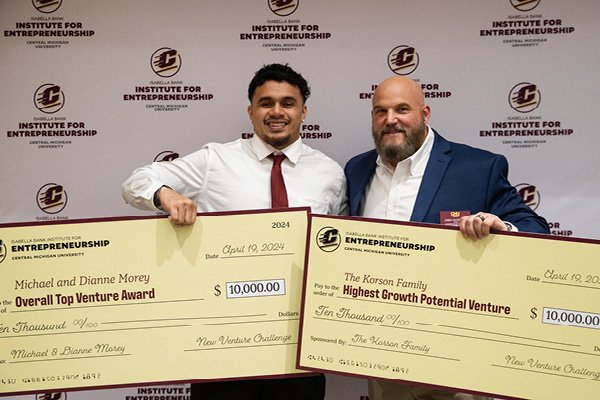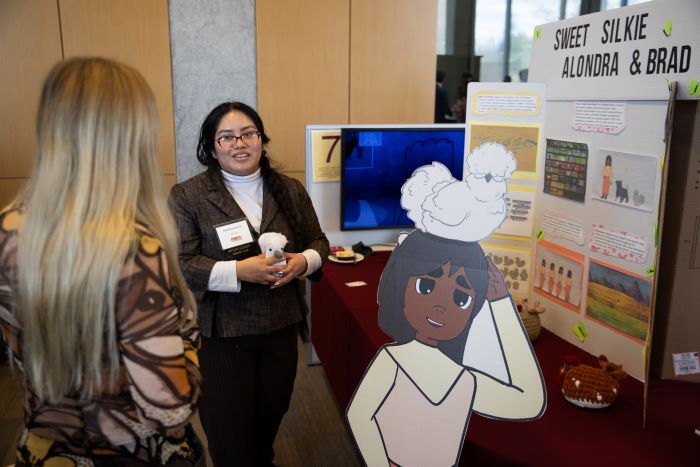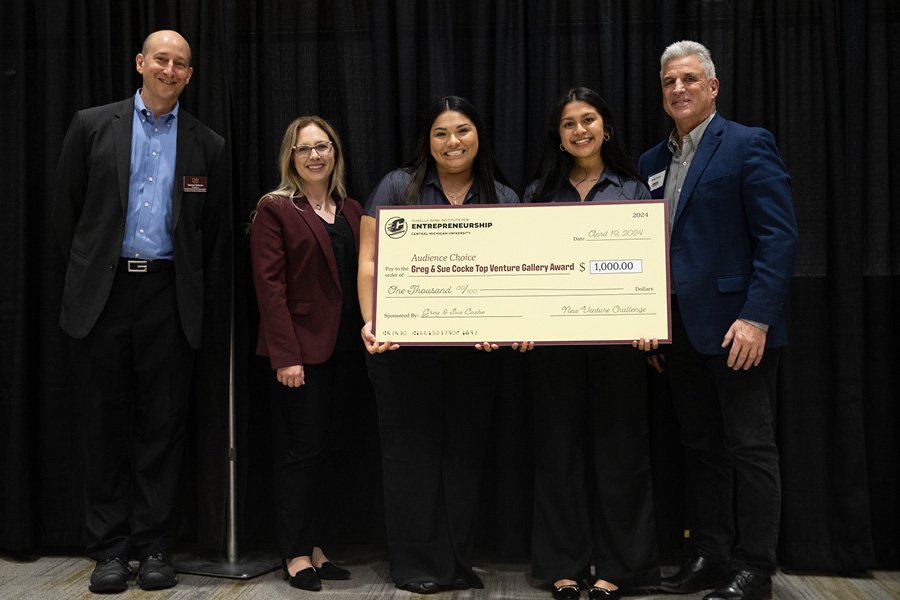
Start up
Passion. Potential. Pitches. Don't miss any of the 2025 New Venture Challenge excitement.
Tune in Friday, April 11 at 1 p.m. for great ideas and fierce competition. Then, join the judges, mentors, spectators and teams as they see who is going home with thousands of dollars in venture financing. The awards broadcast begins at 6:30 p.m. and one team will walk away as the overall best venture.
Central Michigan University’s College of Business Administration is the home of the Isabella Bank Institute for Entrepreneurship and the first Department of Entrepreneurship in the state of Michigan. We are a student-centric hub where experiential, curricular, and external entrepreneurial opportunities intersect.
Our mission is to maximize student success by fostering a campus-wide entrepreneurial mindset that promotes inter-disciplinary collaboration and the creation of new ventures.
We aim to create innovative programming, boost cross-campus and ecosystem collaboration and provide a comprehensive mentoring program.
Our institute provides extracurricular opportunities and is open to all undergraduate and graduate CMU students.
Are you interested in becoming an entrepreneur?
Every journey is unique. Explore the opportunities that interest you.
Ute Hochgeschwender in the College of Medicine has been awarded several recent NIH grants for her studies to better understand how the brain functions. The grants build on her team’s development of novel research methods funded by The BRAIN Initiative.
A collaborative grant “Targeted Circuit Manipulation for Ameliorating Huntington's Disease Pathogenesis” was awarded to Hochgeschwender and her colleague Julien Rossignol. The grant focuses on applying the technology to models of Huntington’s disease which is when nerve cells in the brain deteriorate.
Using their cutting-edge molecular tool, the ‘optical synapse’, the researchers are hoping to slow the decay of the nerve cells and eventually eliminate the disease. Researchers control nerve cells using light emitting enzymes and light detecting molecules. In Huntington’s disease a group of cells in one region excessively fires and stimulates another group of cells in a different region, leading to the typical movement disorder. By having the overactive cells produce the light emitter and the receiving cells harbor a light-sensing molecule that suppresses the cell’s activity, they are able to dampen the disease effects.
Hochgeschwender is also applying the approach to additional diseases. The Hochgeschwender lab is collaborating with the Chu lab at Georgetown University on “Targeted Cortical Circuit Manipulation in Parkinson's Disease” where they are applying the novel technology in a Parkinson’s disease model. A collaboration with the de Lecea lab from Stanford on “Functional Circuit Dissection of the HCRT System” focuses on the hypocretin (HCRT) system, the nerve cells that regulate reward behaviors and the sleep/wake cycle of animals and humans. The project explores the ‘optical synapse’ as a novel method in potential new therapies for insomnia or to adjust wakefulness or energy of animals and humans.
This story is brought to you by the Office of Research and Graduate Studies.

Explore special opportunities to learn new skills and travel the world.

Present your venture and win BIG at the New Venture Challenge.

Boost your entrepreneurial skills through our workshops, mentor meetups and pitch competitions.

Learn about the entrepreneurship makerspace on campus in Grawn Hall.

Present a 2-minute pitch at the Make-A-Pitch Competition and you could win prizes and bragging rights!

Connect with mentors and faculty who are here to support the next generation of CMU entrepreneurs.

Are you a CMU alum looking to support CMU student entrepreneurs? Learn how you can support or donate to the Entrepreneurship Institute.